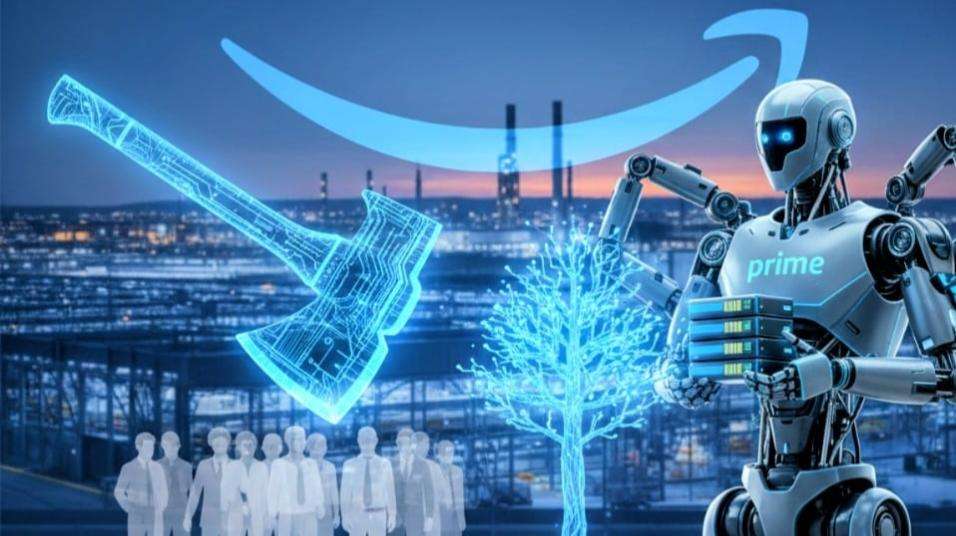The corporate landscape of one of the world's most dominant companies is undergoing a dramatic transformation as Amazon prepares to execute what sources familiar with the matter say will be its largest single round of corporate layoffs. The retail and cloud computing behemoth is reportedly poised to eliminate up to 30,000 corporate roles, beginning this week, a sweeping move that represents nearly 10% of its roughly 350,000 corporate workforce. This is a clear and decisive signal that the era of pandemic-driven over-hiring is over, replaced by a ruthless new focus on efficiency, cost discipline, and the accelerated adoption of artificial intelligence.
The Scale of the Change: What’s Happening Now
The anticipated cuts, which surpass the 27,000 positions eliminated between late 2022 and early 2023, are an immediate measure to reduce expenses and streamline a business that rapidly expanded its headcount during the e-commerce boom of the COVID-19 pandemic. Divisions set to be affected include Human Resources (PXT - People Experience and Technology), where reports suggest cuts could hit as high as 15% of the staff, as well as Devices and Services (home of Alexa), and Operations.
Crucially, the cuts are not merely a cost-saving measure but a strategic realignment. CEO Andy Jassy has been vocal about his initiative to reduce perceived bureaucracy and corporate layers, explicitly stating that generative AI tools will "reduce our total corporate workforce" by automating routine and repetitive tasks. The timing of this extensive layoff indicates that Amazon is now realizing significant AI-driven productivity gains within its corporate support functions.
The Future Focus: AI, Robotics, and the New Corporate Blueprint
Amazon’s future, as laid out by its leadership, is unequivocally 'AI-first'. The current restructuring is the necessary, painful step toward establishing a lean corporate core that can aggressively reinvest in its most profitable and forward-looking areas. The company’s long-term plan centers on three core pillars:
- AI-Driven Corporate Efficiency: The reduction in corporate staff is tied directly to the deployment of powerful AI systems. Amazon is betting that a smaller, more agile corporate structure, supported by automation, will be more effective.
- Accelerating Automation in Logistics: While the corporate team is shrinking, Amazon continues to invest heavily in physical AI and robotics to revolutionize its massive warehouse and delivery network. The company recently unveiled new systems like 'Blue Jay,' a robotic coordination system, and 'Project Eluna,' an agentic AI model for real-time warehouse decision-making. Internal documents, according to some reports, suggest Amazon's robotics team aims to automate up to 75% of operations by 2033, a shift that could allow the company to avoid hiring over 600,000 future workers even as sales volumes double.
- Bolstering AWS for the AI Gold Rush: The savings from the corporate layoffs are expected to be funneled into its most dominant and profitable unit, Amazon Web Services (AWS). AWS is the engine driving the global AI infrastructure boom, and Amazon plans to spend over $100 billion in capital expenditure this year, largely on expanding its cloud and AI data centers. This investment aims to maintain AWS's competitive edge in the highly lucrative cloud and generative AI market. Furthermore, new retail-focused foundation models like 'Amazon Nova' are being developed within AWS to help retailers—including Amazon itself—create product descriptions and optimize supply chain decisions at an unprecedented scale.
A Defining Moment for the Tech Sector
This massive workforce reduction, which comes amidst a broader wave of austerity across the technology sector, is more than just an internal financial adjustment for Amazon. It fundamentally reshapes the company's long-term relationship with its workforce, where a greater portion of the work, from logistical planning to back-office human resources tasks, is being transitioned to machine learning models and robotic systems. For investors, the move is being met with cautious optimism, with analysts forecasting improved profit margins as the company positions itself for a more cost-disciplined and technologically advanced future. The message is clear: the path to becoming "Earth's most customer-centric company" in the age of AI requires a major re-evaluation of the human-to-technology ratio across all levels of the organization.








.svg)
